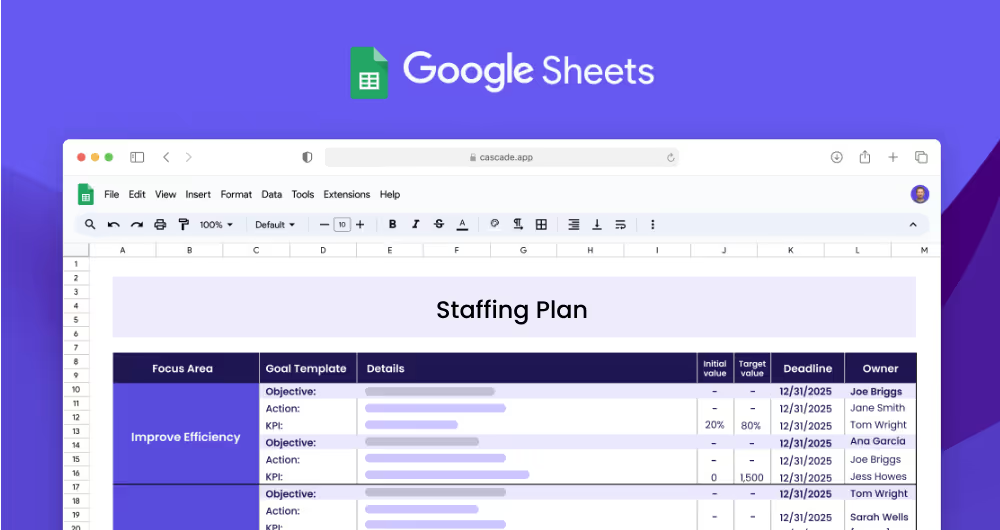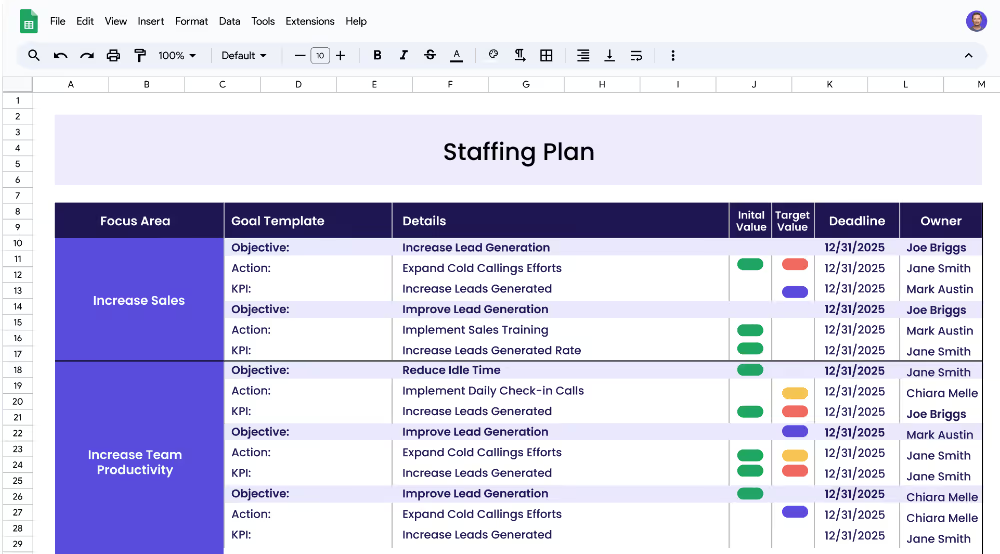A Staffing Plan outlines the roles, responsibilities, and skills needed to achieve an organization's strategic objectives. It includes the number of positions needed, the qualifications of each role, and the timeline for recruiting and onboarding new employees. It is one part of an organization’s overall strategic plan, which defines its mission, vision, and goals.
Each focus area has its own objectives, projects, and KPIs to ensure that the strategy is comprehensive and effective.
This Staffing Plan template is designed for HR teams in organizations of all sizes and industries to create a staffing plan aligned to the corporate strategy. The template makes it easy to map out the current and future needs of the organization and to define the roles, positions, and qualifications required to meet those needs.
The first step in creating a staffing plan is to define clear examples of your focus areas. Focus areas are the broad topics that you want to prioritize and address, such as recruitment, retention, and performance. Within each focus area, you can set objectives, create projects, and define measurable targets (KPIs) to track progress.
Objectives are the specific goals that you want to achieve within each focus area. For example, under the recruitment focus area, you might have an objective to improve recruitment process and increase diversity in recruitment. Under the retention focus area, you might have an objective to increase employee retention and job satisfaction.
Measurable targets (KPIs) are the metrics by which you will track and measure the progress of your objectives. For example, for an objective to improve recruitment process, you might set a KPI to measure the average time to fill a role. For an objective to increase employee retention, you might set a KPI to measure the employee retention rate.
Projects (actions) are the initiatives and activities you will implement to achieve the KPIs. For example, to achieve a KPI to decrease the average time to fill a role, you might implement a project to automate the recruitment process. To achieve a KPI to increase employee retention rate, you might implement a project to implement employee engagement initiatives.
If you’re ready to accelerate your strategy and see faster results, consider using Cascade Strategy Execution Software. Unlike spreadsheets, Cascade provides a streamlined platform designed to help you create, track, and execute your strategy with ease. Sign-up for free or book a demo with one of our strategy experts to get started today!


